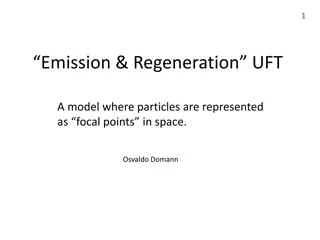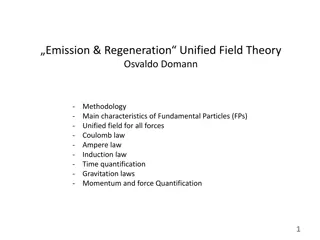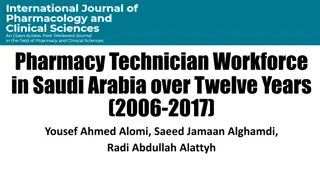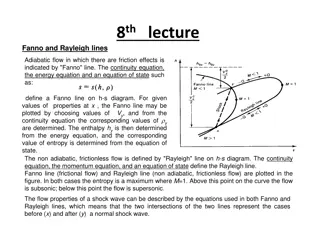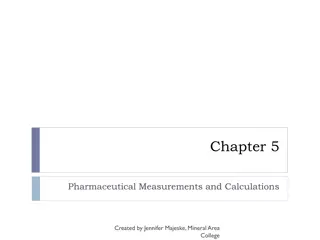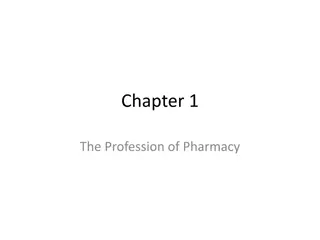Rheology in Industrial Pharmacy: Flow Properties of Particles
Rheology in industrial pharmacy focuses on the flow properties of pharmacological particles, essential for the manufacturing of tablets and capsules. Understanding powder flowability, factors influencing flow rate, and types of powder flow are crucial in ensuring efficient production processes. Factors like intermolecular forces and particle shape play significant roles in determining powder flow rates. By studying rheology in powder form, proper flow characteristics can be maintained to enhance manufacturing efficiency in pharmaceutical industries.
Download Presentation

Please find below an Image/Link to download the presentation.
The content on the website is provided AS IS for your information and personal use only. It may not be sold, licensed, or shared on other websites without obtaining consent from the author.If you encounter any issues during the download, it is possible that the publisher has removed the file from their server.
You are allowed to download the files provided on this website for personal or commercial use, subject to the condition that they are used lawfully. All files are the property of their respective owners.
The content on the website is provided AS IS for your information and personal use only. It may not be sold, licensed, or shared on other websites without obtaining consent from the author.
E N D
Presentation Transcript
Rheology Lab3 Industrial Pharmacy
Definition Rheology is the flow properties of pharmacological particles. Rheo= Flow
Disadvantages of using powders The powder but by time it s converted to tablets and capsules because disadvantages of powder dosage form: most popular dosage forms was of the following 1. Inaccuracy in weight. 2. Can not be used for drugs having hygroscopicity because it absorb moisture. 3. Can not be used for powders that have bad taste.
Why we study rheology of powder!! Powder or granules utilized in a particular form during some phase of manufacture. i.e. (A- Modern tablet machine can produce 5- 20 thousands tablets/min, B- Capsule machine can produce about capsules/min 150 thousands To ensure this type of production (the integrity of powder flow rate) To ensure flowability of the powder.
Types of powder flowability: Freely flowable powder Non-freely (sticky) flowable powder
Factors reducing flow rate 1. Intermolecular forces: Weak cohesive forces on the surface of the particles of different charges (Vander Waals forces). E.g. When two molecules interact (brought close together) both repulsive and attractive forces (opposite charges on both molecules are close together)operate. Molecules will attract to each other leading to bad flowability. Vander Waals Forces HH+------ O H+ O H+
2. Frictional Forces (electrostatic forces): Present on the surface of the particle and they manifest their effect due to friction between particles during movement. Note: As the surface area increases friction increases formation of charges increases flowability decreases.
Note: Charges developed depend on: A- Materials involved. B- Type of motion produced in it (like harmonic, circular, random and rotary) .
3. Shape of particles: Good flowability Spherical particle with small surface area. Bad flowability A-Irregular particles or particles with needle and crystalline shape. B- Flat particles and particles with rough surface.
4. Size of the particles: Bad Flowability (small particles have high surface area and high frictional forces). Flow rate Note:if the size of the particle is too large it may not be able to orifices instrument. Particle size enter of the the
5. Moisture: Good Flow: The flow by the absorbed layer of moisture on the particle surface Reduce the chance of any complicating electrostatic effect by producing conduction path of charge dissipation. Bad Flow: Excessive moisture higher than that of 50 % forming moisture bridges between particle which will cause sticky mixture.
Note: Bad flowable powder may cause the following : 1- Weight variation in the final product. 2- Non uniform particle packing. 3- Air entrapment within the powder which may cause tableting problems. 4- Excessive fine particles which cause lubricating problems.
Improving flowability 1. Formulation additives : A- Talc. B- Magnesium oxide (disrupting the continuous film of adsorbed water surrounding the moist particles) C- Colloidal silicon Dioxide (reducing the balk density of tightly packed powder). 2. Force feeder (which push the powder down in the die). 3. Vibrating Hooper (provide regular vibration allowing the powder to flow continuously).
Measurement of flowability Flow meter 1. (determine the flow rate and provide a means of quantifying uniformity of flow). 2. Angle of repose (funnel and petri dish method) Simple method for estimating the flow properties of a powder, by allowing the powder to flow through a funnel and fall freely onto a surface, the height and the diameter of the resulting cone will be measured and the angle of repose (which is the maximum angle between the free standing surface of the powder heap and the horizontal plane). This angle can be calculated from the following equation: tan = h / r Where = angle of repose, h = height of the powder cone, and r = radius of the cone.
- range from 0 - 90 depending on type of powder, it is related to density, surface area, shape of coefficient of friction of the material. Angle of repose particles, - The value of angle of repose increases if the powder is cohesive.
This table represent the scale of flow determined from Carr s scale of flowability: Flow property Angle of repose Excellent 25 -30 Good 31 -35 Fair (aid not required) 36 -40 Passable (may hang up) 41 -45 Poor (must agitate , vibrate) 46 -55 Very poor > 55








